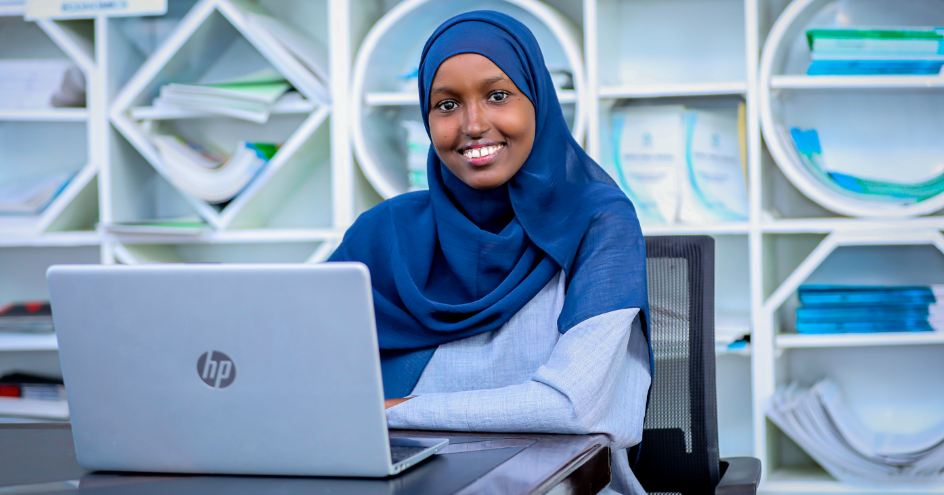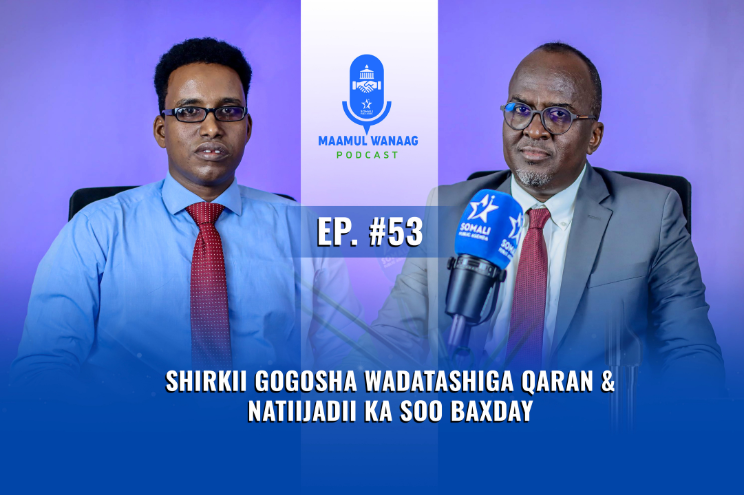Somali Public Agenda
March 4, 2019
Commentary
Somali Public Agenda
March 4, 2019

On the last day of December 2018, the Somali Federal Parliament’s House of the People approved the 2019 federal government budget prepared by the Ministry of Finance. The total budget appropriated for the 2019 fiscal year is $344 million. This is a $70 million increase on last year’s $274 million fiscal budget. It is significant compared to past increases: the 2018 budget was only $14 million higher than 2017’s $260 million budget.
The theme of this year’s budget (and also last year) is ‘relying on our own resources’. The expected domestic revenue is $189.9 million that is projected to be generated primarily from tax on income, profits, capital gains, goods and services, and international trade and transactions. This means that the government envisages an increase of $17.4 million in domestic revenue compared to last year’s budgeted $172.5 million in internal revenue. Moreover, a total of $154.3 million of revenue is assumed to come from bilateral ($30 million) and multilateral ($124.3 million) donors. This accounts for a $30 million increase of donor revenue from last year’s $124.3 million, meaning that the government covers 55.2 percent of the annual budget while the remaining 44.8 percent will be contributed by international donors. Despite the ‘relying on our own resources’ theme, the 2019 fiscal budget still shows dependence on budgetary support from other countries and international organizations.
$133.9 million – the largest share (38.9 percent) of the budget – goes on recurrent administrative expenditures such as the operation expenses of the different government bodies. Another significant portion of the budget ($110.8 million) goes to defense and security sector institutions. A meager $10.3 million is allocated for judiciary institutions. An aggregate sum of $50.8 million was allocated for economic development and social service delivery; this is an increase of more than $11 million from last year’s $39 million budgets for economic and social service institutions, which is encouraging.
Access to justice is one of the primary priorities of the Somali public. However, a mere $10.3 million (or 3 percent) of the overall $344.2 million budget goes to the judiciary institutions. The Ministry of Justice receives less than one million from the budget ($718,088, which is $64,389 higher than 2018 budget of $653,699). The Custodial Corps was allocated $6.7 million – close to one million higher than last year’s $5.8 million budget. The formal judicial authorities such as the Supreme Court ($952,744); Benadir Court ($1.5 million); Appeal Court ($270,284) also receive a small portion of the budget.
Important institutions that are mandated to maintain the independence of the judiciary sector and lead reform in the judiciary are still missing. These include the constitutionally mandated Judicial Service Commission and the Constitutional Court, and there is also no agreed judicial model for a federal Somalia. Interestingly, the Judicial Service Commission has been allocated a budget for the last three years. $188,792 budget goes to the commission this year even though it does not yet exist. The same was budgeted for the commission in 2018.
It is worrying that the third branch of the government, which was supposed to be independent from the other government bodies, receives a mere $10.3 million. This does not encourage public confidence in the court systems.
The 2019 federal government budget allocates $26.4 million (or 7.7 percent) for social services. This is progress that should be commended. It is double last year’s $13.2 million budget appropriation for all social service ministries.
Most of this budget increase goes to the education sector, which gets a record $16 million this year compared to $8 million in 2018 – Ministry of Education, Culture and Higher Education ($10.4 million), Somali National University ($3.4 million), Somali Academy of Science and Arts ($939,341) and Intergovernmental Academy of Somali Language ($1.3 million). The Ministry of Education’s budget increased from $4.5 million in 2018 to $10.4 million in 2019. This is a good indication that education is a priority for the incumbent government. A portion of this fund also goes to public schools managed by the Ministry of Education, Culture and Higher Education.
The health sector receives $7.3 million budget this year up from $4.4 million in 2018. This is a modest increase in the sector, but it remains to be seen how this budget rise will improve access and quality of healthcare from public hospitals. Other social service ministries receive meager funds. The budget appropriated for the Ministry of Labor and Social Affairs ($1.5 million), Ministry of Women and Human Rights ($1 million), including Somali disability Agency, and the Ministry of Youth and Sports ($639,424), indicates that these social service ministries remain badly under-funded.
The Ministry of Youth and Sports warrants special attention. Despite “the youth” representing the majority of the population, the Ministry budget is only slightly higher than half a million. More worrying is that its budget was decreased from $642,928 in 2018 to $639,424 in 2019. This suggests that the government has missed an opportunity to invest in youth and promote youth integration and empowerment.
The $26.4 million budget (or 7.7 percent of the budget) is not sufficient to meet the various demands for quality and affordable public services in Somalia, which was either nonexistent or poorly delivered over the past three decades. However, it is a positive and vital increase of last year’s $19 million (or 6.9 percent of the budget). That the budget for social services increased from a mere $8.3 million (2017) to $26.4 million (2019) in two years gives hope for the future of social service delivery in Somalia.
An increase of budgetary provision for justice institutions and social services depends on the government’s ability to generate domestic revenue, which in turn needs investment in institutions that will help foster economic growth. The 2019 federal government budget allocates $24.4 million (7.1 percent) to the economic development institutions. This represents a small increase of last year’s $20.3 million budget for economic institutions.
Close to $4 million was allotted to the Ministries of Water and Energy ($1.3 million); Agriculture ($1.6 million); and Livestock ($1 million). Slightly more than $2 million goes to the entire marine industry. It is interesting that twice as much goes to the marine industry than livestock which accounts for a much higher proportion of Somalia’s GDP. Livestock is the lowest of all despite being the highest earner (but is susceptible to climate shocks). Further, Ministries of Post and Telecommunication including the National Telecommunication Authority ($3.8 million), Commerce and Industry ($2 million), Public Works and Reconstruction ($1.2 million), Transport and Aviation including Civil Aviation Authority ($3.1 million), and the Ports authority ($2.3 million) were not allocated significant budgets.
Despite the $70 million budget increase of the annual budget, the allocation for economic development institutions did not increase with the budget rise proportionally. If the government is serious about increasing domestic revenue, it has to prioritize economic development. Investing in the capacity of economic institutions will create an environment conducive to job creation in various sectors and it will likewise increase the internal revenue as the government will be able to collect different kinds of taxes from the working population and business transactions.
Notwithstanding the small budget for justice institutions, public services, and economic development, the fact that there is an incremental increase in the annual budget each year is encouraging. In seven years, $230 million was increased to the annual government budget ($114 million in 2013; $118 million in 2014; $ 135 million in 2015; $171 million in 2016; $260 million in 2017; $274 million in 2018; and $344 million in 2019). This is definite progress despite many challenges.
That said, the previous budget for the public institutions should not be the only measurement of the budget allocation. Resource allocation should be based on public demand and priorities. Access to justice, social services, and livelihood are citizens’ priorities. Investing in these sectors will not only improve the social and economic situation, but it will also enhance government legitimacy and public trust.



Somali Public Agenda is a non-profit public policy and administration research organization based in Mogadishu. Its aim is to advance understanding and improvement of public administration and public services in Somalia through evidence-based research and analysis.
Stay updated on governance and public services in Somalia!